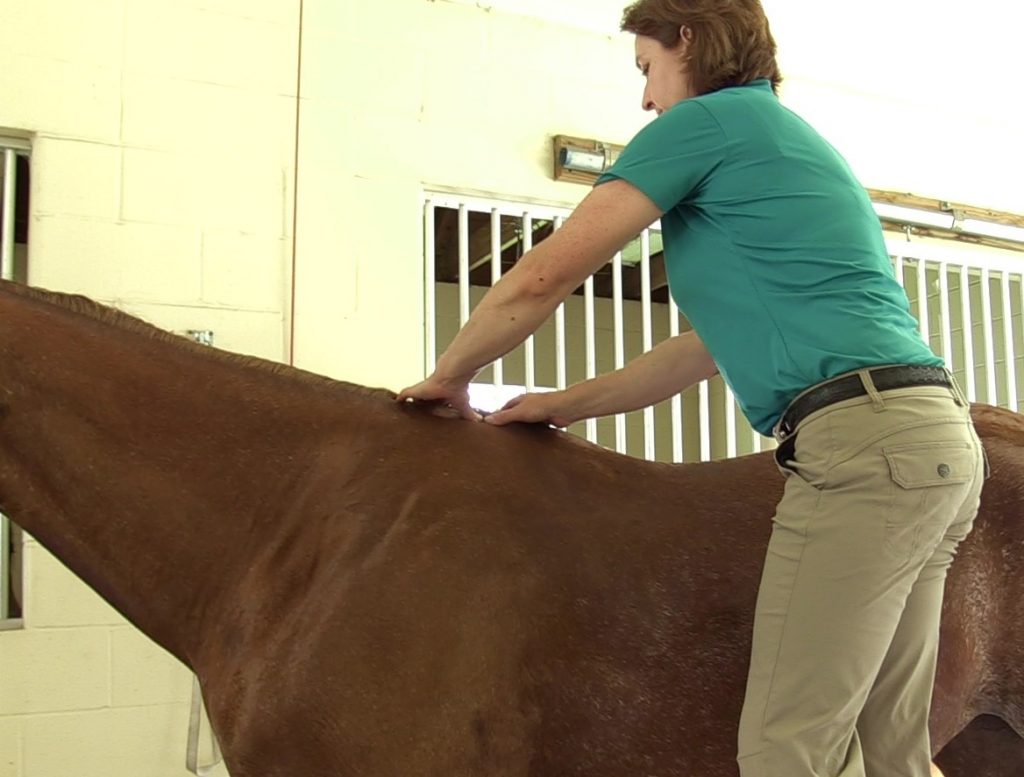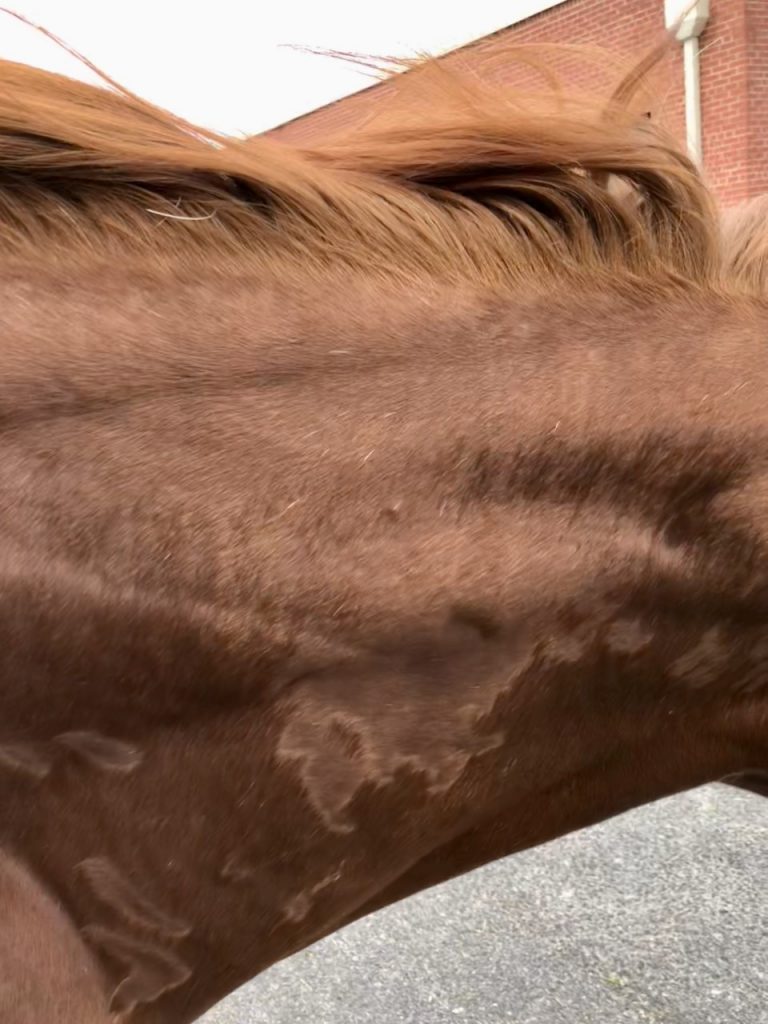Tuesdays with Tony
There’s a new doc around my clinic and she’s always going around “adjusting” horses and bending them in weird ways. I was purr-plexed, so I had to do a little research to get to the bottom of what’s going on at my clinic. Turns out they’re treating horses with Equine Medical Manipulation. It’s called Chiropractic when it’s done on humans, but for horses, my Docs call it EMM. Same thing basically.
Personally, I spend 23 hours a day laying around, but a lot of horses have jobs to do. Joint problems can really get in the way of their work. When the joints malfunction, it affects the neurological balance, and can cause your horse to have muscle or skeletal pain, muscle tension and restricted joint motion. The goal of Equine Medical Manipulation is to improve the mobility and function of the joints, reduce the pain your horse may have, and ease muscle tension.
What does it look like when my Doc does an EMM evaluation? She looks at the horse’s posture and how he moves, then does a whole lot of poking and prodding to feel the joints through their range of motion. She feels for muscles that are tight and she checks the horse’s flexibility. She can tell from all that what joints aren’t working like they’re supposed to. It takes about an hour and the horses usually get more and more relaxed as it goes on. Most horses will show their approval during the adjustment. They may lick and chew, take deep breaths, or shake their head around after a particularly good release of tension. I think the horses should just try purring, but my Doc says they don’t know how and the licking is just as good. Anyway, the horses look like they really like the adjustment. I tried to get the Doc to give me an adjustment by weaving around her ankles and between her legs, but she doesn’t seem to get my message.
What does EMM treat?
EMM treatment doesn’t replace traditional veterinary medicine, but it can give my Doc an additional way to diagnose and treat a variety of musculoskeletal problems. Here are some things it’s useful for.
- Treating chronic musculoskeletal problems
- Treating acute problems such as tension or stiffness
- Treating prophylactically to maintain fitness and performance, whether your horse is a sport horse or a weekend warrior
- Maintaining comfort in older horses
The number of EMM sessions your horse needs depends on the condition being treated, how long the problem has been going on, and his age. Conditions that have been going on for a long time usually require more sessions and newer conditions can require fewer sessions.
Mythbusters!
Let’s talk about things that get my fur in a knot…some misconceptions about Equine Medical Manipulation.
- The bones aren’t “out”. You’ve got to be kitten me! Can you see the bone sticking out of the horse? Is it on the ground with your dog chewing on it? (If it is, you have a whole other problem) If not, the bone is not out. It’s still in! So, let’s stop saying things like that. My Doc will talk about “restrictions”, she won’t say things like “his hip is out”. What really happens is that reduced joint mobility causes negative affects to the joint itself, the nervous system, and the muscles and tendons surrounding the joint. These things lead to your horse having pain, abnormal posture, or poorly coordinated movement.
- They’re not cracking anything. Cracking would actually be really bad! If I knocked your favorite coffee cup off the counter (again) and cracked it, would you be happy about that? What my Doc does is clear the restrictions around a “motion unit”, which is the bones of the joint and the soft tissues that surround them. That means she does a manipulation to help the bones, muscles, and other stuff move the way they are supposed to. Sometimes, you hear an audible sound when air pressure in the joint is released.
- You don’t need a lot of force to adjust a horse. It shouldn’t look dramatic. In fact, good EMM looks kinda boring. Like the horse is usually falling asleep by the end of it, and I’d be ready for a cat nap too. The adjustments are called “high velocity, low amplitude” which means they are quick and precise, not rough. They are done in a very specific location at a specific angle. It takes a lot of training to learn this. That’s why you should be careful who you hire to adjust your horse.
Would EMM be good for your horse?
So how do you know if your horse could benefit from Equine Medical Manipulation? Horses can show lots of signs that indicate pain or discomfort. These can include reduced performance, incoordination or uneven gait rhythm, poor attitude, tense muscles, abnormal posture, pinning the ears when saddled or mounted, hollowing the back, swishing the tail, behavior changes, sensitivity to touch, stiffness when bending, muscle wasting, decreased stride length, difficulty engaging the hindquarters, pulling against one rein, lack of flexibility, difficulty flexing the poll, difficulty with collected gaits, lateral movements, or turning, and bucking.
One really common thing my Doc sees is tension lines in the neck. Horses should have smooth necks, even the really well muscled horses. If your horse’s neck has creases in the muscle, that’s a sign of a serious muscle spasm and it’s definitely time to call my Doc!
Wow, that’s a long list. Horses really can be annoying. But purrhaps they’re not actually being jerks. Unlike us cats, horses don’t usually act like jerks just for fun – they’re not that creative. Sometimes they just hurt and don’t know how to tell us. When they act up, there is usually a reason. It may be a training issue, but pretty frequently bad behavior is due to pain or discomfort.
So if your horse is having a problem, or if you want to stay on top of their comfort before issues arise, ask your Doc about whether an Equine Medical Manipulation evaluation could help.
Until next week,
~Tony
P.S. Don’t forget..the humans are busy creating podcasts and YouTube videos, so make sure you check those out. Our next seminar is coming up on Thursday June 25th at 6:30 PM..all about Acupuncture & EMM! Please remember to wear your mask, I would hate to miss out on any tummy rubs!
Tuesdays with Tony is the official blog of Tony the Clinic Cat at Springhill Equine Veterinary Clinic in Newberry, Florida. If you liked this blog, please subscribe below, and share it with your friends on social media! For more information, please call us at (352) 472-1620, visit our website at SpringhillEquine.com, or follow us on Facebook!
[jetpack_subscription_form title="Subscribe to Whinny's Wisdoms"]



